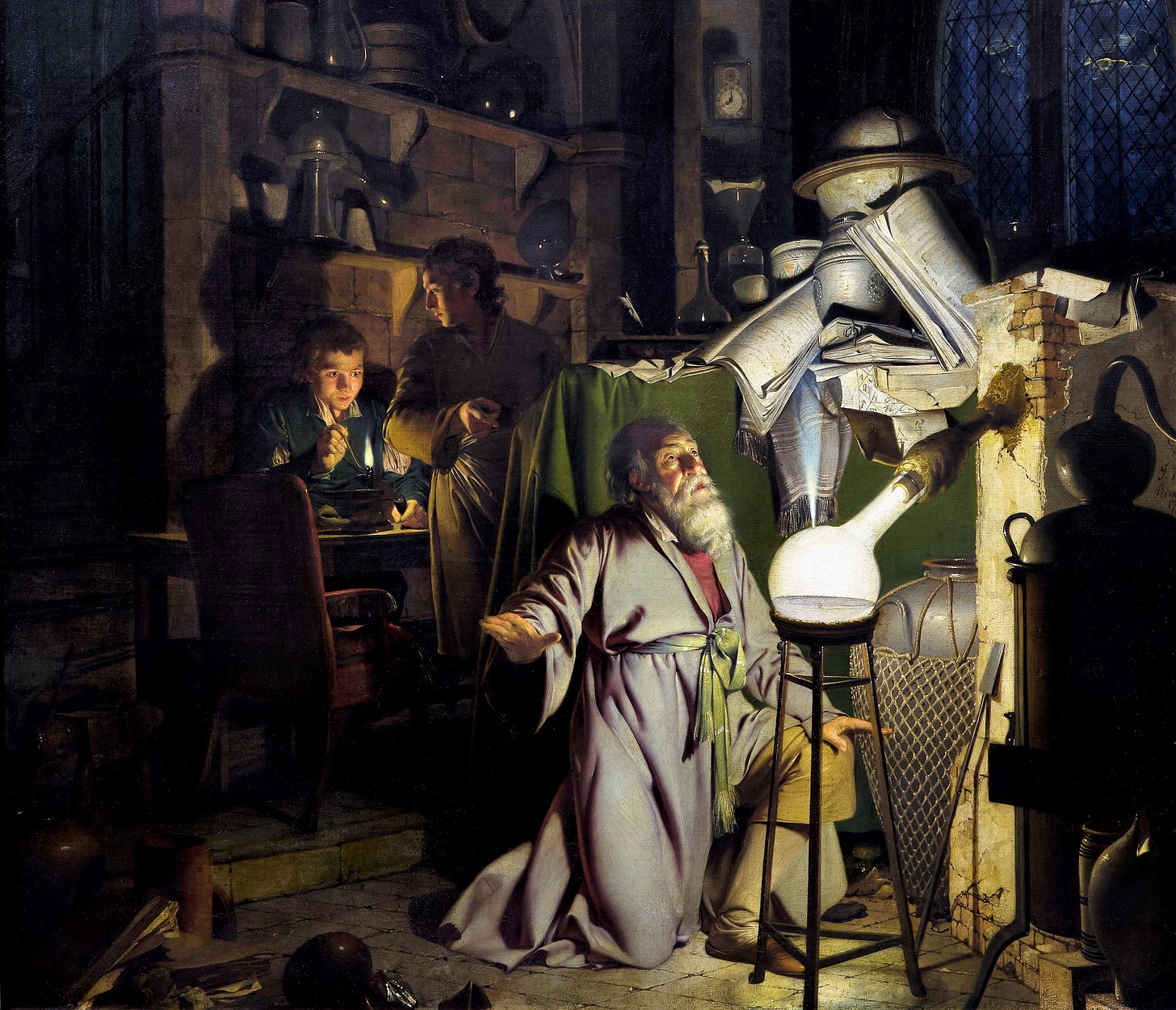Science and Alchemy differed in their method, not in their fantasy
rise of alchemy | how science replaced alchemy | fantasy of science
This reading is part of a series: On Nuclear Fear
It is sometimes difficult to view Isaac Newton as someone who was associated with the mystic art of alchemy. After all, he is viewed as one of the greats among the early scientists. In fact, many of the great figures at the start of the Scientific Revolution in the 17th century spent considerable time practicing alchemy. However, the Scientific Revolution created a clear distinction between modern science and alchemy. This distinction was mostly in the methods that were employed by each, not in their aspirations. They both were trying to understand the forces of nature, to conquer them and command them so that limits of life and wants could be demolished. They both would see in their pursuits an ideal and would try to grasp it with a burning passion that instructed them to waive grand fantasies of the future.
Although the pursuit of alchemy is ancient, its rigorous study as a “science” in Europe probably started after the 12th century as “a field of knowledge distinguished by an authoritative philosophical provenance, an abstruse technical vocabulary, and an insistence on the importance of secrecy” (Rampling, 2020, 32). Central to alchemy was the promise of limitless wealth achieved by transmuting base metal into “perfect metals” like gold and silver. The idea was to “cure” the defects to achieve perfection, which was to be achieved with the help of the philosopher’s stone (Kedzie, 1891, 113). This idea of curing would extend to the pursuit of alchemical medicine — curing humans using elixirs. Alchemy in the 14th and 15th centuries was not just about transmuting base metal into gold. Although this was its ultimate objective, it also constituted a whole range of chemical pursuits that were supposed to be of great use to society, e.g., turning hard iron into flowing liquid and making glass that could withstand the blow of a hammer (Rampling, 2020). Here was the promise of early chemistry. The physical transformations that chemical processes effected were like magic to many. In the hands of the adept, these transformations were proof that there was truth in the promise of alchemy. Alchemists were susceptible to grand visions themselves, in what they saw as achievable from their pursuit, and in many cases, actively tried to convince others of their grand vision to gain patronage from the crown. There was real optimism about the potential of alchemy in the 14th century. There was, after all, a pressing need for solutions to economic, political, and health problems. Alchemy was seen as the means of curing the ills of the time: “the evils of famine, pestilence and war” and the “hemorrhaging” of coin overseas (Rampling, 2020, 24). When Edward III of England decided to take alchemists on patronage in the 1340s, it was with an explicit goal to lessen the burden on the treasury, to foster economic growth, and to finance wars (pp.24–27). The optimism helped alchemical projects draw funds from the wealthy. Alchemical language started to become more mainstream and was adopted by philosophers and poets to express both material and metaphysical ideals (p.2). Its optimism was contagious, and soon, even health practitioners were eager to adopt alchemical techniques in treating patients.

